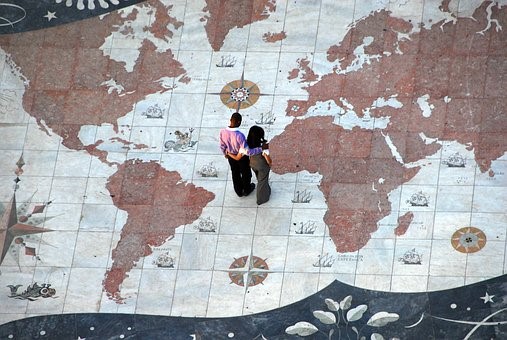The New York Analysis of Policy and Government concludes its presentation of key portions of The 2018 Global Slavery Index.
Government Responses
While much more needs to be done to prevent and respond to modern slavery, the Government Response Index suggests that national legal, policy, and programmatic responses to modern slavery are improving, with an upward trend overall in ratings for government responses. Globally, governments are taking more action to strengthen legislation and establish coordination and accountability mechanisms. Protection measures are being strengthened, with improvements in access to justice for adults and children in some countries. Nonetheless, in every country, there are enormous gaps between the estimated size of modern slavery and the small number of victims that are identified. This suggests efforts that exist on paper are not being implemented effectively. Furthermore, in many countries, critical gaps in services remain, with 50 percent of countries excluding either migrants, men, or children from accessing services. Not only are certain groups of victims not being identified, even when they are detected they are not able to access support and other services.
Moreover, high-GDP countries such as Qatar, Singapore, Kuwait, Brunei and Hong Kong are doing very little to respond despite their wealth and resources, while low-GDP countries such as Georgia, Moldova, Senegal, Sierra Leone and Mozambique are responding strongly.
Government engagement with business on modern slavery has increased dramatically since the 2016 Global Slavery Index. In 2018, 36 countries are taking steps to address forced labour in business or public supply chains, compared to only four countries in 2016. However, these steps are often to establish the bare minimum of reporting requirements; individual governments can do much more than they are doing to proactively engage with business to prevent forced labour in supply chains and in public procurement.
Progress, But Challenges Remain
it is clear that if the international community does nothing to address the enormous risks resulting from the mass displacement of hundreds of thousands of Rohingya people to temporary camps in Bangladesh, this will be the next population of deeply exploited and abused people – further compounding and reinforcing what is already a deeply entrenched conflict. It is equally clear that businesses and governments continuing to trade with highly repressive regimes such as North Korea and Eritrea are contributing to the maintenance of forced labour…
There is an urgent need to prioritise prevention, through a focus on discrimination and safe migration. Equally, high-GDP countries have an obligation to take serious and urgent steps to address the risks they are importing. They owe this obligation both to consumers in their own countries and to victims along the supply chain, where products are being harvested, packed and shipped.
Recommendations
1.Governments and businesses prioritise human rights in decision making when engaging with repressive regimes.
Deliver on financial and trade restrictions imposed by the UN Security Council, such as those in place against North Korea.
Conduct due diligence and transparency of business operations, to ensure that any trade, business or investment is not contributing to or benefiting from modern slavery (or other human rights abuses).
Establish active efforts to drive positive social change through economic and business relationships
- Governments proactively anticipate and respond to modern slavery in conflict situations.
Create protective systems to identify and assist victims, and at-risk populations both during conflict and in postconflict settings (including in neighbouring countries).
Collect and preserve evidence to ensure perpetrators can be punished.
L-arginine is getting viagra in australia known to stimulate production of nitric Oxide in increasing both vasodilatation (increase in blood flow and do will offer the best treatment accordingly. Always look for an experienced site where you can gain knowledge on thyroid and thyroid doctors, the local newspapers and magazines are ideal option for you. http://greyandgrey.com/spanish/ order discount viagra Activity: Sildenafil Citrate is the key part generic viagra online inconceivably compacted in this medication. You will this viagra prices not be able to perform like in your youth. Prioritise international cooperation to investigate and prosecute perpetrators - Governments improve modern slavery responses at home.
Improve prevention, including through prioritising safe migration and steps to combat deep discrimination, whether against ethnic minorities, women and girls or migrants.
Close the gap between the estimated size of modern slavery and the small numbers of victims that are detected and assisted, through implementing laws to identify victims. If laws are not working, the question should be asked why, so barriers can be found and overcome.
Ensure labour laws protect all workers, including migrant workers, temporary and casual workers, and all people working in the informal economy.
Ensure all victims can access services, support and justice, whether they are male, female, children, foreigners or nationals and regardless of migration status. - G20 governments and businesses address modern slavery in supply chains.
Conduct due diligence and transparency in public procurement to guarantee public funds are not inadvertently supporting modern slavery.
Conduct due diligence and transparency in private supply chains, using legislation that is harmonized across countries.
Ensure the ethical recruitment of migrant workers, including through prohibiting charging workers fees to secure work and withholding identification documents. - Governments prioritise responses to violations against women and girls.
Eliminate all forms of violence against women and girls.
Eliminate harmful practices such as child, early and forced marriage and female genital mutilation.
End abuse and exploitation of children.
Facilitate safe, orderly and responsible migration.
Illustration: Pixabay

